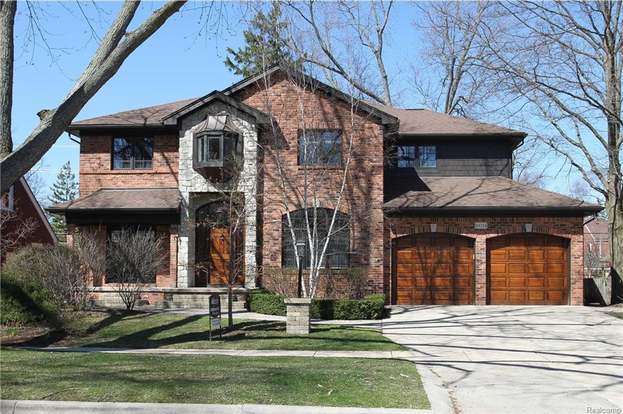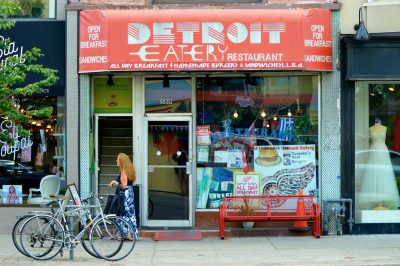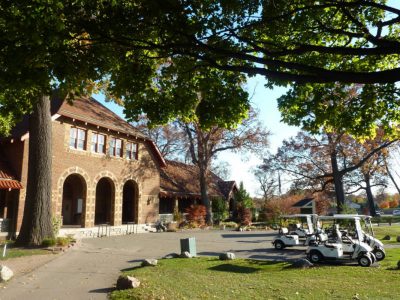About Huntingtoon Woods

Huntington Woods is a community located in Detroit, Michigan. It is at the Woodward Corridor and Ten and Eleven Mile Roads to the south and north, and by Coolidge Highway and Woodward Avenue. Huntington Woods is sometimes referred to as the “City of Homes”. This is because it is mainly made up of residences.
The median household income in Huntington Woods is $124,014. The per capita income for the village is $71,033.
Southeast Michigan Communities
- West Blomfield
- Troy
- Rochester Hills
Huntingtoon Woods Homes
Huntington Woods Neighborhoods and Subdivisions
 The in-town area of Huntington Woods, also considered the city center, is a suburban neighborhood. It consists of mostly medium-sized to large single-family homes and townhomes. Most of the homes are owner-occupied. Most residents are older and live in homes built between 1940 and 1969. There are some residences in Huntington Woods that were built before 1940. Many of the adults in the city center neighborhood have earned an advanced degree. It has a higher rate of adults with advanced degrees than 98.8% of the other neighborhoods in the U.S.
The in-town area of Huntington Woods, also considered the city center, is a suburban neighborhood. It consists of mostly medium-sized to large single-family homes and townhomes. Most of the homes are owner-occupied. Most residents are older and live in homes built between 1940 and 1969. There are some residences in Huntington Woods that were built before 1940. Many of the adults in the city center neighborhood have earned an advanced degree. It has a higher rate of adults with advanced degrees than 98.8% of the other neighborhoods in the U.S.
Talbot Ave & Coolidge Hwy is an urban community in Huntington Woods, MI. It has homes that are typically three or four-bedroom, single-family homes, and apartments and high-rises. Most homes are owner-occupied. The neighborhood is home to older adults with homes built between 1940 and 1969. Some homes were built between 1970 and 1999. Many of the residents are executives, managers or professionals. At least 78.1% of the people living in Huntington Woods are executives, managers, or some other professional. The area is notable for the number of residential homes built between the 1940s and 1960s. These homes are considered to be older and well-built homes, which is likely why so many people prefer them to newer homes
Hungtinton Woods History

J. Lockwood owned the first land grant in Huntington Woods in 1812. The area was made up of mostly nine farms. Other parts of Huntington Woods include Manor, Bronx, and Huntington Park. These were subdivisions that were initially a part of the Royal Oak Township until the village of Huntington Woods incorporated it in 1926. The area was later incorporated as a city in the early 1930s.
Starting in the 1920s, many prominent upper-level executives from Detroit, MI, began purchasing homes in the Huntington Woods Subdivision. Homeowners began building homes similar to those found in two Detroit neighborhoods, Palmer Park, and Sherwood Forest. Huntington Woods was home to automobile designers, advertising executives, architects, bankers, and other prominent residents. Perhaps due to the wealth of the area, it has earned the name ‘subdivision deluxe’.
Residents of the subdivision have to abide by building restrictions and conditions. If someone was placed on a smaller lot, they had to build at least $6,000 at cost. Larger lot owners had to have a construction cost of at least $7,500. All homes had to be single-family, built with pressed brick fronts or cement block covered with stucco. They were not permitted to have a flat roof. Garages were allowed but only by the homeowner and after the permanent residence was finished being constructed. Each street required specific places where the building was permitted on the lots.
The plotting of Huntington Woods Subdivision was finalized in 1916 and approved by the Oakland County Register’s Office in 1917. One of the most areas most well-known attraction is the Rackham Golf Course, which was designed by leading golf architect, Donald Ross. The city of Huntington Woods grew around the golf course. In 2002 it was named one of the top 10 public courses that were designed by Donald Ross.
Median household income in Huntington Woods is approximately $87,086.
Huntington Woods School
 Students are either a part of the Berkley School District or attend Ferndale Public Schools. Many students in Huntington Woods also attend private schools, such as Detroit Country Day School; located on four separate campuses in Oakland County, north of Detroit. University of Detroit Jesuit High School; one of two Jesuit high schools located within the city of Detroit, Shrine Catholic High School, Hillel Day School, Mercy High School, and Roeper School.
Students are either a part of the Berkley School District or attend Ferndale Public Schools. Many students in Huntington Woods also attend private schools, such as Detroit Country Day School; located on four separate campuses in Oakland County, north of Detroit. University of Detroit Jesuit High School; one of two Jesuit high schools located within the city of Detroit, Shrine Catholic High School, Hillel Day School, Mercy High School, and Roeper School.
Detroit County Day School students achieve National Merit Semi-finalist and Finalist status.
Hungtingon Woods Parks and Recreation

- 11 Mile/ Huntington Park
- – Small sledding hill, 3 tennis courts, in-line hockey area, picnic tables, and benches
- Reynolds Park – Swings, 2 play structures, picnic area
- Gordon L. Hassing Senior Park – 2 shuffleboard courts, horseshoe pits, picnic pavilion, and tables, garden area
- Val Jones Skate Park – In-line hockey rink, skate park
- Scotia Park – Landscaped picnic park with tables and benches
$359,300
Median Home Price
$1,500
Median 1-Bedroom Rent
2.1%
Estimated Price Increase Next Year
Huntington Woods Restaurants, Bars, and Shopping

These are some popular dining options near Huntington Woods
- Detroit Eatery – This is a casual dining restaurant that also offers carry-out. It is open for lunch and dinner. The cuisine is American, Asian, Indian, and Greek, which means they offer a variety of food options.
- Little Brother Burgers – The name says it all ‘burgers’. It is considered a great place to get delicious food on the go. It offers simple food done right.
- Pinky’s Rooftop – This rooftop bar is the perfect place to go before going out. Grab a quick cocktail and a bite to eat or just relax with friends after work for small plates and specialty cocktails. One of the restaurant’s best-known deserts is the cotton candy.
Huntington Woods Points of Interest

- Rackham Golf Course – This is an 18-hole public golf course located at the south end of the city.
- Detroit Zoo – A portion of the zoo is situated within the city limits of Huntington Woods.
- Fred A. Baker House – In 1890, Fred A. Baker purchased 320 acres of land in Royal Oak Township, which later became a Dairy Farm. The Colonial Revival home that was built on the farm in 1896 was later moved to where it currently stands in 1916. It is a part of the marker series of Michigan.




